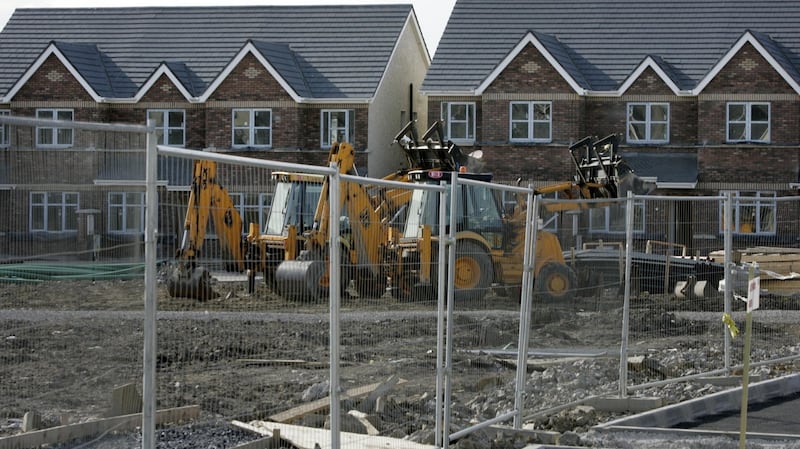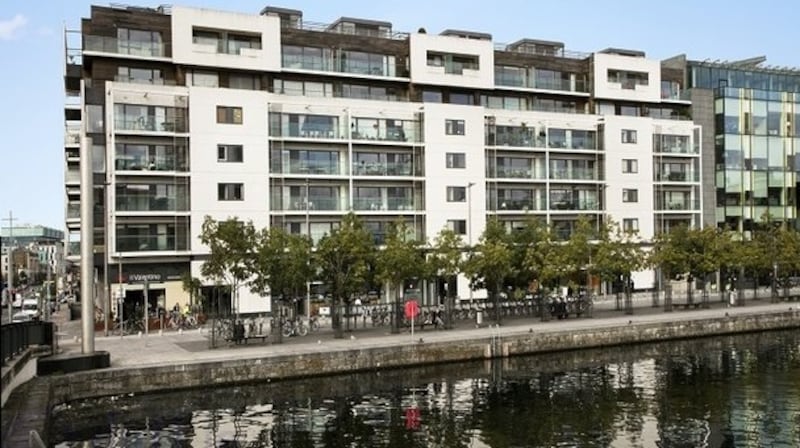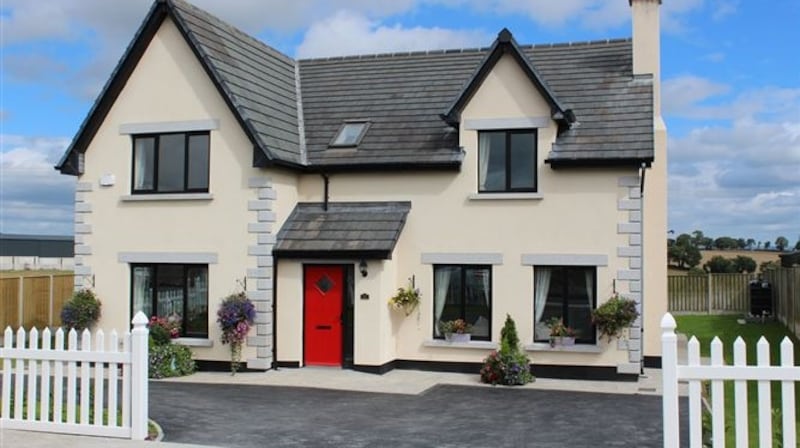If not quite back in force, then first-time buyers are certainly looking to buy in greater numbers than in recent times. With rents so high, it's now cheaper to buy than rent in many parts of the State – although this doesn't necessarily mean that buying is always best; it will depend on the individual's circumstances.
But if it is now that bit easier to get the funds together to buy a property, it doesn’t mean that the whole transaction has become more straightforward.
As Trevor Grant of Associated Expert Mortgage Advisers notes: "Getting approved is not the problem any more – it's finding a property." Indeed with supply at record lows around the State, finding a property is difficult, with first-time buyers in competition with trader-uppers and cash rich investors.

One way of boosting your chances is to make sure your finances stack up before you place your first bid.
How much can I borrow?
These days, banks are constrained by the Central Bank guidelines on lending, which act as a ceiling on how much you can borrow. Typically, as a first-time buyer, you will be allowed to borrow 3.5 times your income, with a down payment of 10 per cent required.
This means that a single person earning €50,000, for example, will be able to borrow €175,000, which, along with a deposit of €17,500, will fund a property selling at €192,500.
A married couple earning €100,000 between them will be able to borrow €350,000 to fund a property purchase of €385,000.
There are exceptions to these rules: 20 per cent of mortgages by a lender can exceed the aforementioned income multiples, while 5 per cent of applicants will succeed in buying with a deposit worth less than 10 per cent of the purchase price.
Whether or not you succeed in getting an exception will likely depend on the strength of your finances, and the scale of your monthly outgoings – they will typically work in favour of someone who has a bigger deposit, for example.
The timing of your application also matters.
“You’re better off applying in the first quarter than the last quarter,” advises Grant, noting that banks may have used up their 20 per cent allocation coming into the end of the year.
He also suggests that you have a specific property in mind before you apply for an exception.
“Banks don’t want to give an exception away where it may not be used,” he says.
A KBC mortgage calculator, for example, suggests that the single earner on €50,000 could borrow up to €247,208, or €230,850 once a monthly car loan of €200 is factored in. The married couple, on the other hand, could borrow up to €487,113, with no monthly commitments.
Public sector workers can borrow less due to the pension levy, KBC says) – €238,518 for the single applicant or €453,829 for the couple.
Some additional restrictions might apply. Certain lending institutions aren’t too keen on lending on one-bed apartments. EBS, for example, will only lend 75 per cent of the value of a one-bed apartment,
If you're self-employed and finding it difficult to get a mortgage, Pepper Money has a specialist product which may work for you but you will pay a rate of as much as 4.25 per cent if you only have a 10 per cent deposit. Moreover, the lender is currently only offering loans in urban areas including Dublin and surrounding counties, Cork, Limerick and Galway.
How will Help to Buy help?
If you’re in the market for a new home, the Government’s Help to Buy scheme can help bridge the gap in terms of the amount you might have saved for a deposit – and the amount you actually need to complete a transaction.
The scheme, which launched on January 1st of this year, only applies to first-time buyers purchasing newly-built properties, and will run until the end of 2019. The developer of the project must also be approved by Revenue (to check see here).
If you’re eligible for the scheme and interested in a new property, you can apply for a rebate of income tax paid over the past four years of up to 5 per cent of the purchase price, to a maximum of €20,000. This can significantly diminish the cost of the property to you – although there have been claims that, since the launch of the scheme, the price of new homes have increased.
A two-part process, you can apply for the scheme before you have pinpointed the property you wish to purchase.
At Parkside in Malahide, for example, three-bed semi-detached houses are on the market for €320,000, which equates to a deposit of €32,000. To purchase such a property, you will need to put down a €5,000 deposit, which is fully refundable. If you quality for Help to Buy, this means you will be entitled to €16,000 tax back, bringing the down payment to €21,000.
Finally, once you sign contracts with the developer, Cairn Homes, you will then need to hand over the outstanding €11,000. Thanks to Help to Buy, the total cost to you will be €16,000.
It’s no surprise then that, thanks to Help to Buy, many first-time buyers are now going for new homes – and it also avoids the stress of the bidding process, where you may be constrained in bidding up to your mortgage-approval level, and offers the certainty of buying at a fixed price.
But remember, just because there are incentives to buy a new home, a second-hand home may actually be the better option for you in the long term.
What term to go for?
The simplest thing to remember is that the longer the term, the more interest you will end up paying your bank over the course of the loan. So, a 35-year term is considerably more expensive than a 25-year term even though your monthly repayments on a shorter term mortgage will be higher.
Consider the example of a property with a €300,000 mortgage. Over 25 years, the total interest bill will amount to € 150,561 (ie, bringing the total cost of your property purchase up to €450,000). Over 35 years, however, the interest bill is €70,000 more, at €220,746.
What that means for monthly repayments is that, on a 25-year mortgage, your monthly repayment will be €1,502 while, on the longer 35-year product, it will be substantially less, at €1,240. Ultimately, it might just come down to what you can afford on a monthly basis.
Who has the best rates?
Unfortunately, despite the historically low-interest rates in the euro zone at the moment, Irish banks continue to charge more than their European counterparts. Nonetheless, as the table shows, it is certainly worth your while shopping around for the best rates – particularly given that expectations across the euro zone are that rates will start to rise again next year.
Who’s giving a cashback?
In addition to the Help to Buy scheme, it’s possible to avail of other “cash back” offers which can, on the surface at least, reduce the costs of your purchase. Of course, if you’re paying a higher mortgage rate, the benefit of this cashback may be negligible over time, and you may have been better off financially seeking out the lowest mortgage rate rather than being swayed by any incentives.
Nonetheless, a number of banks are offering cashbacks. Customers of Bank of Ireland perhaps are receiving the most generous return. You can get 2 per cent back on the value of your mortgage. So, for example, a €200,000 mortgage will earn you a refund of €4,000, which is paid when you draw down your mortgage.
Moreover, if you have a current account with the bank and stay with them for five years, you will at that point be entitled to a further 1 per cent back, or another €2,000 into your bank account on the aforementioned mortgage value. Its offer is valid until November 30th, 2017.
Permanent TSB is also offering 2 per cent back up until June 30th this year, while EBS Building Society has just extended its 2 per cent cash back until September 30th. Ulster Bank is offering a €1,500 contribution towards the cost of your legal fees.
How much is stamp duty?
The bad news is that everyone now pays stamp duty – even first-time buyers and purchasers of new homes. But the good news is that it is levied at a lower rate than it has been previously – 1 per cent on purchases up to the value of €1 million, and 2 per cent on purchases over that.
This means that a house on the market for €150,000 would incur stamp duty of €1,500, or €3,000 for a house sold for double that.
Remember if you’re buying a new house, calculating the level of stamp duty is a little bit different, and may be lower than you think. As VAT (13.5 per cent) is levied on the price of the house, the purchaser only needs to pay stamp duty on the purchase price, net of VAT. So, for example, if you paid €227,000 (including) for your new house, this is made up of the base price of €200,000 plus VAT of €27,000. This means you should only pay stamp duty on the base price of €200,000, so €2,000.
What other costs should I budget for?
It’s not just the purchase price; buying a home is an expensive process. Additional costs you should budget for include valuation, survey and legal fees, and insurance. You should expect to pay between €100 and €150 for a bank-approved valuer to perform the task. Home insurance (typical annual cost €330) and life assurance (mortgage protection) will also need to be considered, while you also need to factor-in the cost of a survey. This can cost up to about €500.
Legal fees are another issue. Typically, you would have paid about 1 per cent on the purchase price for conveyancing services. These days, however, you should look for a fixed-cost provider. Most solicitors will offer you a flat rate – probably in the region of €1,000-€1,500 – for the transaction.
Finally, local property tax is levied at an annual rate of 0.18 per cent. If you purchase a home midway through the year, it is up to the vendor to ensure that the tax is paid. If, however, you purchase a new home, you won’t have to pay property tax until the new valuation date in 2019.
Buying your first home? Do the sums before you buy:

How much: €380,000
Where: Gallery Quay, Grand Canal Dock
Deposit: €38,000
Help-to-Buy: €0
First-time buyer’s own funds: €38,000
Monthly repayments: €1,536
Annual property tax: €573
Stamp duty: €3,800

How much: €200,000
Where: Park Gate, Carlow
Total deposit: €20,000
Help-to-Buy: €10,000
First-time buyer’s own funds: €10,000
Monthly repayments: €808
Annual property tax: €315
Stamp duty: €2,000
Above examples are based on 90 per cent LTV, 30-year mortgage at interest rate of 3.5 per cent.


















